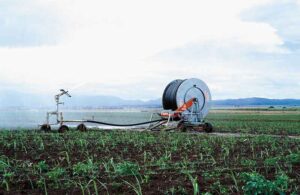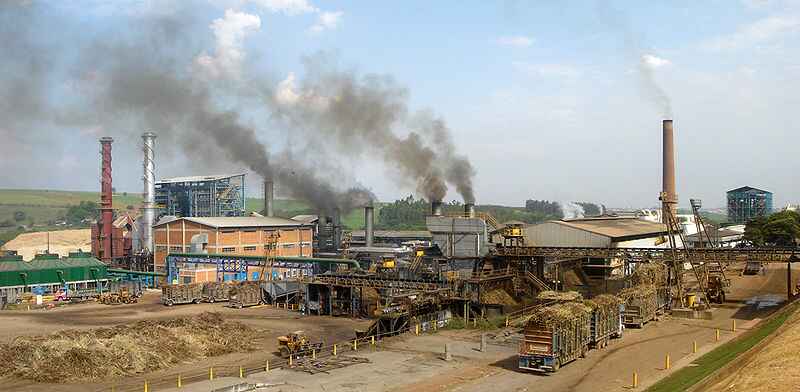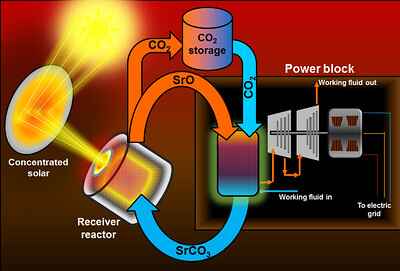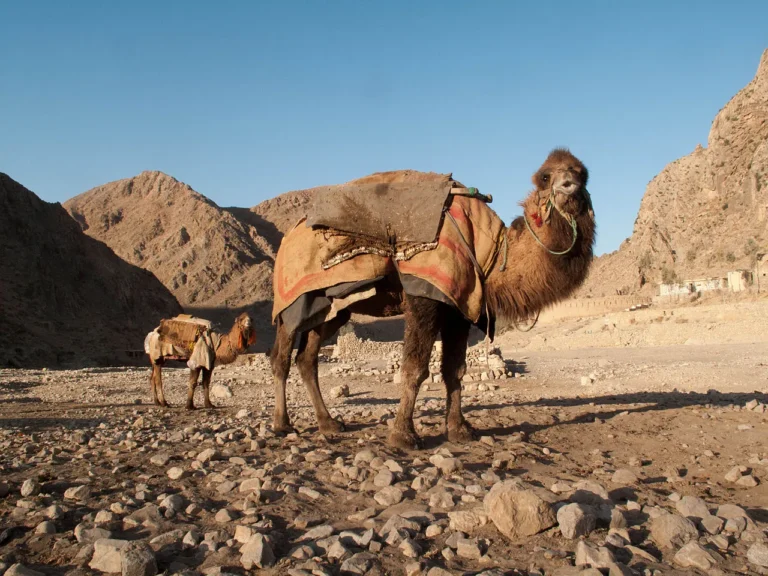5 Environmental Impacts of Biofuels Explained
Environmental impacts of biofuels are; water depletion and degradation, greenhouse emission, air pollution, and land use change.
This article discusses the environmental impacts of biofuels, as follows;
1). Water Depletion and Degradation (as one of the Environmental Impacts of Biofuels)
One of the negative effects of biofuel production and utilization on the environment, is water resource depletion/degradation.
Biofuel affects water resources by consuming excessive amounts of water during their production, as well as by causing the pollution of water in the course of biomass-feedstock production [10].
When crops like soybeans and maize are grown to be used as sources of biofuel, the need for high-volume productivity of such crops encourages unsustainable farming practices like excessive irrigation and fertilizer application.
Excessive irrigation can significantly deplete water resources at the regional level, while excessive use of fertilizer to enhance feedstock growth, can cause runoff into water bodies, which in turn leads to excessive nutrient accumulation, eutrophication, and low water quality.
The processing of biofuels is also water intensive, so that several time more water is needed to produce a given amount of biofuel. Inefficient management at any stage in the handling of biofuels, also places water resources at risk.
What this implied is that using biofuels is not generally recommendable where water conservation is a priority. Biofuel usage is also not recommendable in areas where food insecurity is an issue, since the feedstock for these biofuels may compete with food crops for water and land resources.
The cultivation of feedstock for biofuel production has also been linked to hydrological hazards like soil erosion [7].

2). Deforestation
Biofuels affect the forest ecosystem by causing its depletion either directly through land conversion and logging, or indirectly through greenhouse emission and air pollution.
When forest trees are used as sources of cellulosic feedstock for producing biofuels, the continuous removal of such vegetation can result in intensive deforestation, especially if efforts at regeneration and reforestation are either not made, or not sufficient.
Forests are also lost, when forested lands are converted to agricultural lands for growing biofuel feedstocks. An example of this is the conversion of forests to oil palm-plantations for biodiesel production [8].
Deforestation by biofuels is a major, negative environmental impact which has ripple effects for the ecosystem, such as lower rates of carbon sequestration, and decrease in biodiversity [9].
3). Greenhouse Emission (as one of the Environmental Impacts of Biofuels)
Biofuels produce carbon emissions alongside other greenhouse gases, at all stages of their lifecycle including feedstock cultivation, processing, and biofuel utilization.
The emission of GHGs by biofuel at the stage of feedstock cultivation, occurs mostly as a result of land conversion and deforestation [6].
Because they come from organic sources, biofuels contain significant amount of carbon, which they release during combustion.
It is important to note that while biofuels emit greenhouse gases, their emissions are smaller in volume than those from fossil fuels [4].
Also, biofuels can be described as being carbon neutral, because they come from biomass which can be regenerated continuously, so that the emitted carbon can be re-absorbed. However, the carbon neutrality of biofuels can only be exploited if biomass used for producing biofuel is regenerated at equal rate as it is consumed.
4). Air Pollution
Asides their role in greenhouse emissions, biofuels also contribute to air pollution.
Biofuels can pollute the air through bush burning activities on feedstock farms, as well as through the combustion of biofuels like fuelwood and bioethanol, to produce thermal energy for various applications.
The role of biofuels in air pollution, is linked to both climate change and public health problems [3].
Some air pollutants from biofuel combustion are; nitrous oxide (NOx), carbon monoxide (CO) and particulate matter (PM).
Efforts to address the issue of air pollution by biofuels have led to the development of refined forms of biodiesel that produce significantly-less emissions than fuelwood, ethanol, and fossil fuels [5].

5). Land-Use Change (as one of the Environmental Impacts of Biofuels)
One of the foremost environmental impacts of biofuels is land use change (LUC), which may be direct (DLUC) or indirect (ILUC).
Generally, land use change by biofuels refers to all forms of conversion of the original use of land, in response to the demands of biofuel and bioenergy development.
A common form of land use change is the conversion of agricultural lands to biomass feedstock farms. This can reduce the amount of land available for production of food for the human and livestock population [2].
Land use change by biofuels is linked to other environmental impacts like deforestation and greenhouse emission [1].
In some cases, biofuel-induced land use changed can have positive effects on the environment. Such cases include feedstock cultivation on already degraded land, and space minimization with sustainable agricultural practices.
Conclusion
Environmental impacts of biofuels are;
1. Water Depletion and Degradation
2. Deforestation
3. Greenhouse Emission
4. Air Pollution
5. Land-Use Change
References
1). Ahlgren, S.; Di Lucia, L. (2014). "Indirect land use changes of biofuel production - a review of modelling efforts and policy developments in the European Union." Biotechnol Biofuels. 2014 Mar 7;7(1):35. Available at: https://doi.org/10.1186/1754-6834-7-35. (Accessed 11 March 2023).
2). Barnabe, D.; Bucchi, R.; Rispoli, A.; Chiavetta, C.; Porta, P. L.; Bianchi, C. L.; Carvoli, G. (2013). "Land Use Change Impacts of Biofuels: A Methodology to Evaluate Biofuel Sustainability." Biofuels - Economy, Environment and Sustainability. Available at: https://doi.org/10.5772/52255. (Accessed 11 March 2023).
3). Chen, J.; Li,.C.; Ristovski, Z.; Milic, A.; Gu, Y.; Islam, M. S.; Wang, S.; Hao, J.; Zhang, H.; He, C.; Guo,.H.; Fu, H.; Miljevic, B.; Morawska, L.; Thai, P.; Lam, Y. F.; Pereira, G.; Ding, A.; Huang, X.; Dumka, U. C. (2017). "A review of biomass burning: Emissions and impacts on air quality, health and climate in China." Sci Total Environ. 2017 Feb 1;579:1000-1034. Available at: https://doi.org/10.1016/j.scitotenv.2016.11.025. (Accessed 11 March 2023).
4). Hanaki, K.; Portugal-Pereira, J. (2018). "The Effect of Biofuel Production on Greenhouse Gas Emission Reductions." In: Takeuchi, K., Shiroyama, H., Saito, O., Matsuura, M. (eds) Biofuels and Sustainability. Science for Sustainable Societies. Springer, Tokyo. Available at: https://doi.org/10.1007/978-4-431-54895-9_6. (Accessed 11 March 2023).
5). Hill, J.; Nelson, E.; Tilman, D.; Polasky, S.; Tiffany, D. (2006). "Environmental, economic, and energetic costs and benefits of biodiesel and ethanol biofuels." Proc Natl Acad Sci U S A. 2006 Jul 25;103(30):11206-10. Available at: https://doi.org/10.1073/pnas.0604600103. (Accessed 11 March 2023).
6). Jha, A. (2008). "Biofuel farms make CO2 emissions worse." Available at: https://www.theguardian.com/science/2008/feb/08/scienceofclimatechange.biofuels. (Accessed 11 March 2023).
7). Lazaro, L. L. B.; Giatti, L. L.; Junior, W. C. S.; Giarolla, A. (2020). "Land-water-food nexus of biofuels: Discourse and policy debates in Brazil." Environmental Development 33:100491. Available at: https://doi.org/10.1016/j.envdev.2019.100491. (Accessed 11 March 2023).
8). Ramadhan, R.; Mori, A.; Abdoellah, O. S. (2023). "Biofuels Development and Indirect Deforestation." In: Triyanti, A., Indrawan, M., Nurhidayah, L., Marfai, M.A. (eds) Environmental Governance in Indonesia. Environment & Policy, vol 61. Springer, Cham. Available at: https://doi.org/10.1007/978-3-031-15904-6_10. (Accessed 11 March 2023).
9). Stallard, E.; Song, W. (2021). "Indonesia's biodiesel drive is leading to deforestation." Available at: https://www.bbc.com/news/59387191. (Accessed 11 March 2023).
10). Tilman, D.; Hill, J.; Lehman, C. (2006). "Carbon-negative biofuels from low-input high-diversity grassland biomass." Science. 2006 Dec 8;314(5805):1598-600. Available at: https://doi.org/10.1126/science.1133306. (Accessed 11 March 2023).



